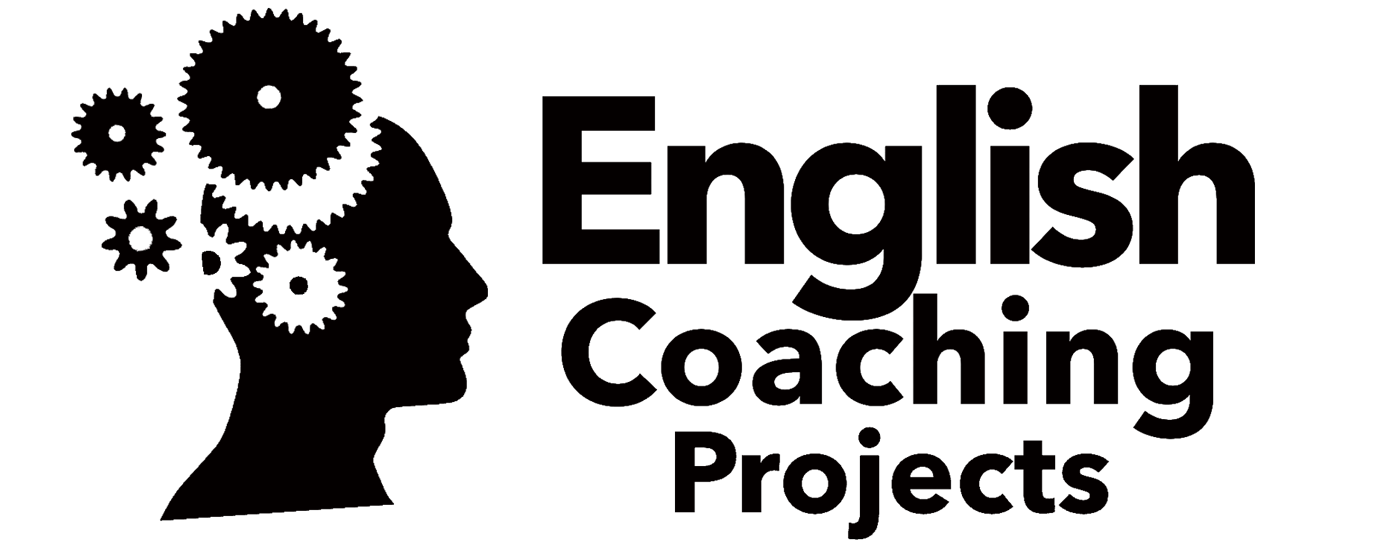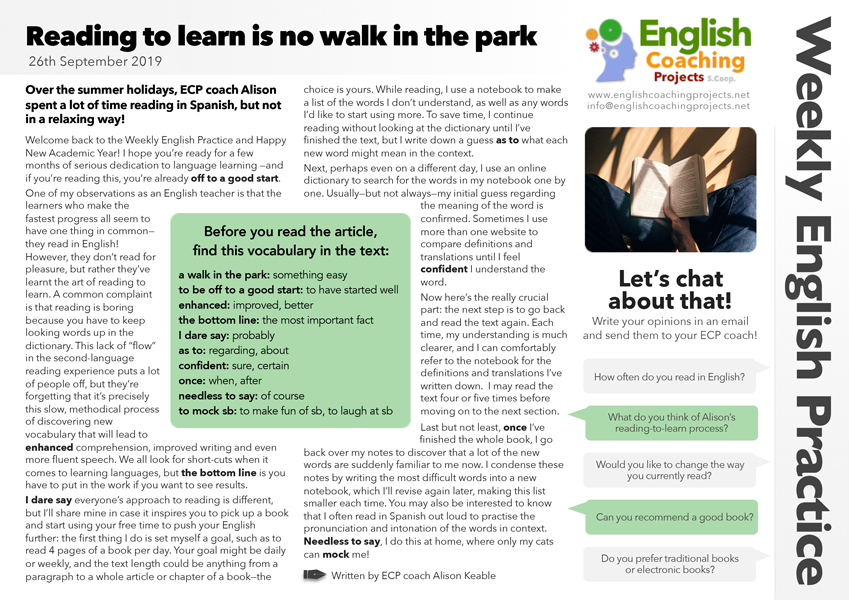Click on the image to download the pdf
Reading to learn is no walk in the park
Over the summer holidays, ECP coach Alison spent a lot of time reading in Spanish, but not in a relaxing way!
Before you read the article, find this vocabulary in the text:
a walk in the park: something easy
to be off to a good start: to have started well
enhanced: improved, better
the bottom line: the most important fact
I dare say: probably
as to: regarding, about
confident: sure, certain
once: when, after
needless to say: of course
to mock sb: to make fun of sb, to laugh at sb
Listen to the audio (refresh the page if it’s not visible)
Welcome back to the Weekly English Practice and Happy New Academic Year! I hope you’re ready for a few months of serious dedication to language learning —and if you’re reading this, you’re already off to a good start.
One of my observations as an English teacher is that the learners who make the fastest progress all seem to have one thing in common—they read in English! However, they don’t read for pleasure, but rather they’ve learnt the art of reading to learn. A common complaint is that reading is boring because you have to keep looking words up in the dictionary. This lack of “flow” in the second-language reading experience puts a lot of people off, but they’re forgetting that it’s precisely this slow, methodical process of discovering new vocabulary that will lead to enhanced comprehension, improved writing and even more fluent speech. We all look for short-cuts when it comes to learning languages, but the bottom line is you have to put in the work if you want to see results.
I dare say everyone’s approach to reading is different, but I’ll share mine in case it inspires you to pick up a book and start using your free time to push your English further: the first thing I do is set myself a goal, such as to read 4 pages of a book per day. Your goal might be daily or weekly, and the text length could be anything from a paragraph to a whole article or chapter of a book—the choice is yours. While reading, I use a notebook to make a list of the words I don’t understand, as well as any words I’d like to start using more. To save time, I continue reading without looking at the dictionary until I’ve finished the text, but I write down a guess as to what each new word might mean in the context.
Next, perhaps even on a different day, I use an online dictionary to search for the words in my notebook one by one. Usually—but not always—my initial guess regarding the meaning of the word is confirmed. Sometimes I use more than one website to compare definitions and translations until I feel confident I understand the word.
Now here’s the really crucial part: the next step is to go back and read the text again. Each time, my understanding is much clearer, and I can comfortably refer to the notebook for the definitions and translations I’ve written down. I may read the text four or five times before moving on to the next section.
Last but not least, once I’ve finished the whole book, I go back over my notes to discover that a lot of the new words are suddenly familiar to me now. I condense these notes by writing the most difficult words into a new notebook, which I’ll revise again later, making this list smaller each time. You may also be interested to know that I often read in Spanish out loud to practise the pronunciation and intonation of the words in context. Needless to say, I do this at home, where only my cats can mock me!
Written by ECP coach Alison Keable
Let’s chat about that!
Write your opinions in an email and send them to your ECP coach!
- How often do you read in English?
- What do you think of Alison’s reading-to-learn process?
- Would you like to change the way you currently read?
- Can you recommend a good book?
- Do you prefer traditional books or electronic books?


